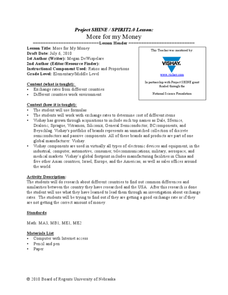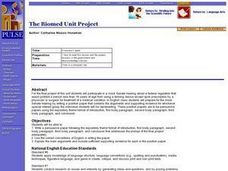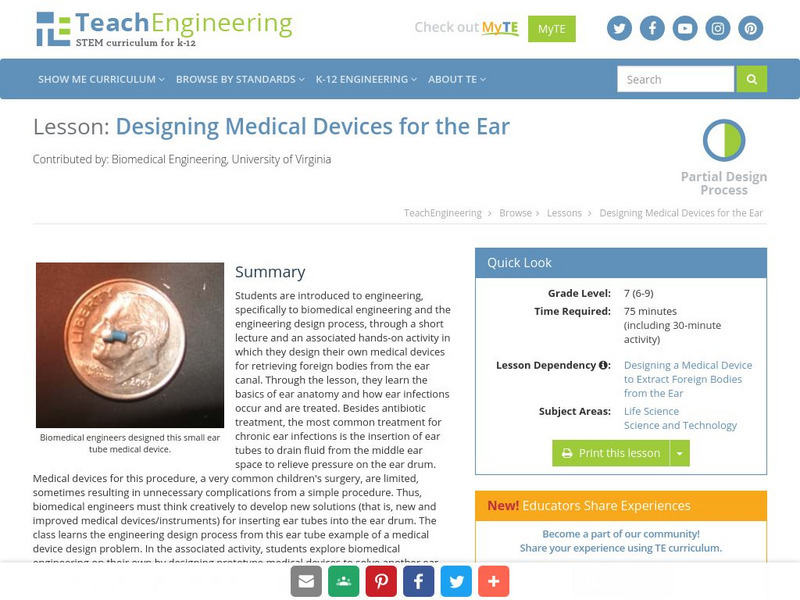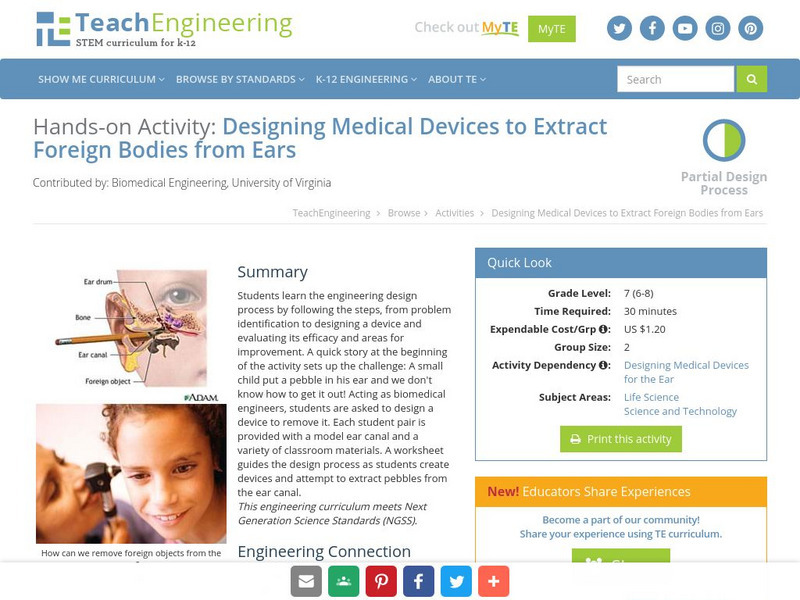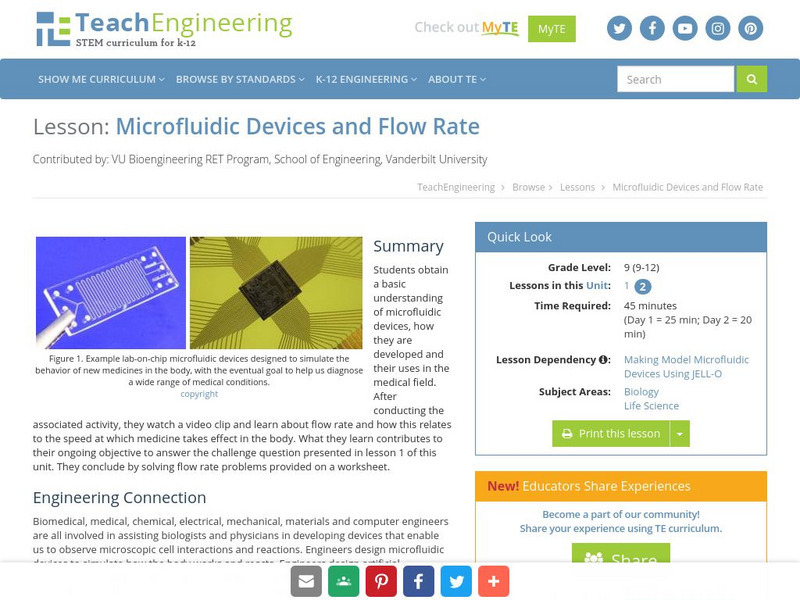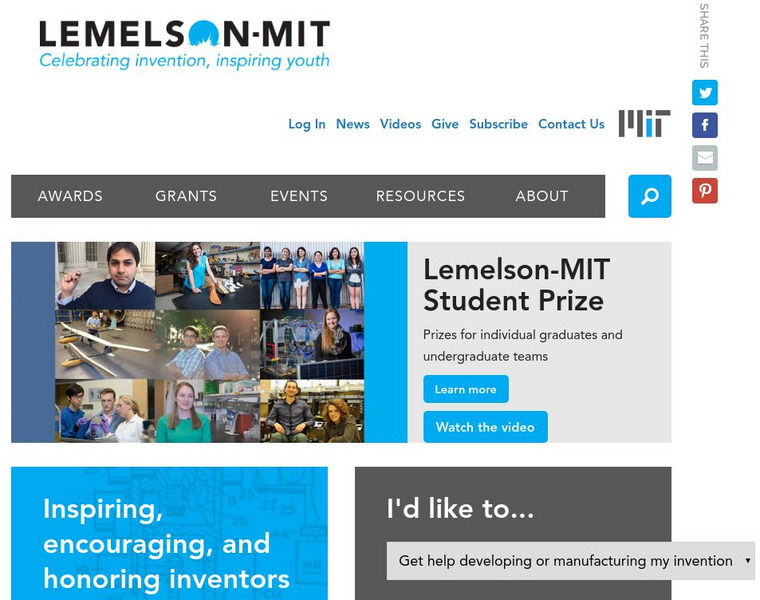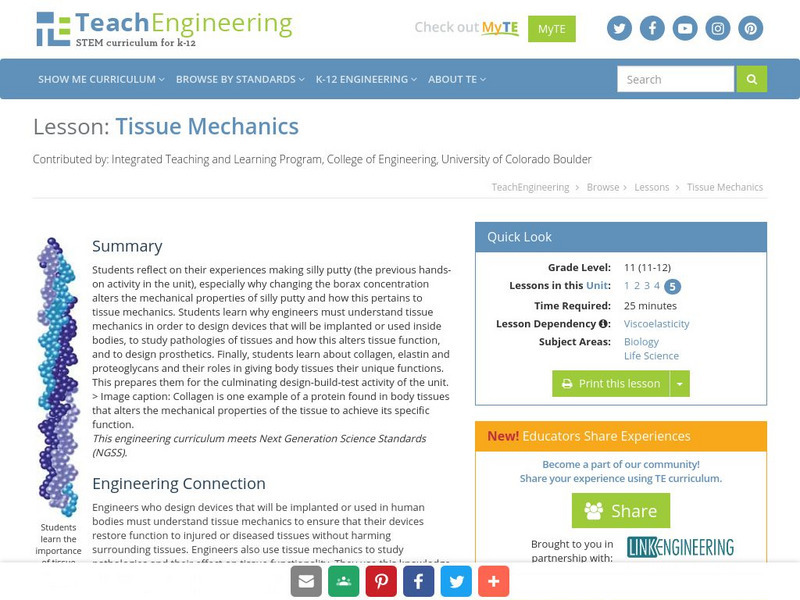Curated OER
Classroom Triangles
Students use bearing measurements to triangulate and determine objects' locations. Working in teams of two or three, students must put on their investigative hats as they take bearing measurements to specified landmarks in their...
Curated OER
Robotic Arm
Young scholars encounter a real-life robotic arm that may help stroke victims regain control of their environment. The Robotic physical therapy--the new science. They research the history and foundation to this unique alternative to long...
Curated OER
Inside Information
Students research and write reports about inventions and inventors. They develop graphic organizers to organize their information, and create reports on the impact of inventors and inventions.
Curated OER
Gun Safety
Students gather data about guns, and examine the resulting treatment and death from bad decisions and guns. They author an original newspaper with information on "Gun Safety."
Curated OER
More for my Money
Students solve problems involving ratio and proportion. In this algebra lesson, students analyze the currencies found in different countries. They create formulas to convert between the different currencies and use ratio and proportion...
Curated OER
Skills You Need to Succeed
Students identify basic skills needed to succeed in the world of work, including communication skills, computation skills, problem solving skills, and interpersonal skills.
Curated OER
The Biomed Unit Project
Young scholars write a persuasive paper following the expository theme format of introduction, first body paragraph, second body paragraph, third body paragraph, and conclusion that addresses the prompt of the final project adequately....
Curated OER
What does AG have to do with me?
Students practice alphabetizing while categorizing sources of basic agricultural products. They discuss agricultrual products, discover where they are grown and draw a simple agricultural scene on poster board.
Curated OER
New Breed of Robots Takes War To the Next Level
Students study an article and answer questions. In this exploring robots lesson students read an article on military robots and answer questions.
TeachEngineering
Teach Engineering: Designing Medical Devices for the Ear
Students are introduced to biomedical engineering and the engineering design process through a short lecture and an activity in which they design their own medical devices for retrieving foreign bodies from the ear canal. They learn...
TeachEngineering
Teach Engineering: Designing a Medical Device
Students learn the engineering design process by following the steps, from problem identification to designing a device and evaluating its efficacy and areas for improvement. A quick story at the beginning of the activity sets up the...
TeachEngineering
Teach Engineering: Medical Instrumentation
Students will discuss the special considerations that must be made when dealing with the human body, and will gain an appreciation for the amazing devices that have improved our quality of life. They will also explore how 'Form Fits...
Massachusetts Institute of Technology
Mit: Invention of the Week: Forrest Bird: Medical Respirator
Learn about the inventor of "the first reliable low-cost, mass-produced medical respirator," Forrest Bird. This article overviews his education and career, the development of the respirator, and the effects the respirator has had on the...
TeachEngineering
Teach Engineering: Surgical Device Engineering
This unit focuses on teaching students about the many aspects of biomedical engineering (BME). Students will see that it is a broad field that relies on concepts from each of the other disciplines of engineering. They will also begin to...
TeachEngineering
Teach Engineering: Microfluidic Devices and Flow Rate
Students obtain a basic understanding of microfluidic devices, how they are developed and their uses in the medical field. After conducting the associated activity, they watch a video clip and learn about flow rate and how this relates...
Massachusetts Institute of Technology
Mit: Invention of the Week: Bessie Blount: Self Feeding Device for Amputees
Read about Bessie Blount's contribution to medicine--her work as a physical therapist and her invention of a feeding device for amputees.
TeachEngineering
Teach Engineering: Biomedical Devices for the Eyes
Middle schoolers examine the structure and function of the human eye, learning some amazing features about our eyes, which provide us with sight and an understanding of our surroundings. Students also learn about some common eye problems...
Other
Hellenica World: Ancient Greek Medical Inventions
Learn about various medical devices invented and used by the ancient Greeks including "a portable waterclock used to measure the pulse of patients" and a "surgical instrument, known as 'the spoon of Diokles.'"
Curated OER
Kids Health: People, Places and Things That Help Me
A directory of kid-friendly articles and videos about the people who keep kids healthy and the places where medical professionals work. Also learn about the kinds of tests that are used to diagnose health problems and about different...
TeachEngineering
Teach Engineering: Watch Out for the Blind Spots
In this service-learning engineering project, students follow the steps of the engineering design process to design a hearing testing device. More specifically, they design a prototype machine that can be used to test the peripheral...
TeachEngineering
Teach Engineering: Next Generation Surgical Tools in the Body
Through this unit, students act as engineers who are given the challenge to design laparoscopic surgical tools. After learning about human anatomy and physiology of the abdominopelvic cavity, especially as it applies to laparoscopic...
TeachEngineering
Teach Engineering: Engineers Love Pizza, Too!
In this service-learning engineering project, students follow the steps of the engineering design process to design an assistive eating device for a client. More specifically, they design a prototype device to help a young girl who has a...
TeachEngineering
Teach Engineering: Preconditioning Balloons
Students use balloons (a polymer) to explore preconditioning a viscoelastic material behavior that is important to understand when designing biomedical devices. They improve their understanding of preconditioning by measuring the force...
TeachEngineering
Teach Engineering: Tissue Mechanics
Students reflect on their experiences making silly putty (the previous hands-on activity in the unit), especially why changing the borax concentration alters the mechanical properties of silly putty and how this pertains to tissue...






